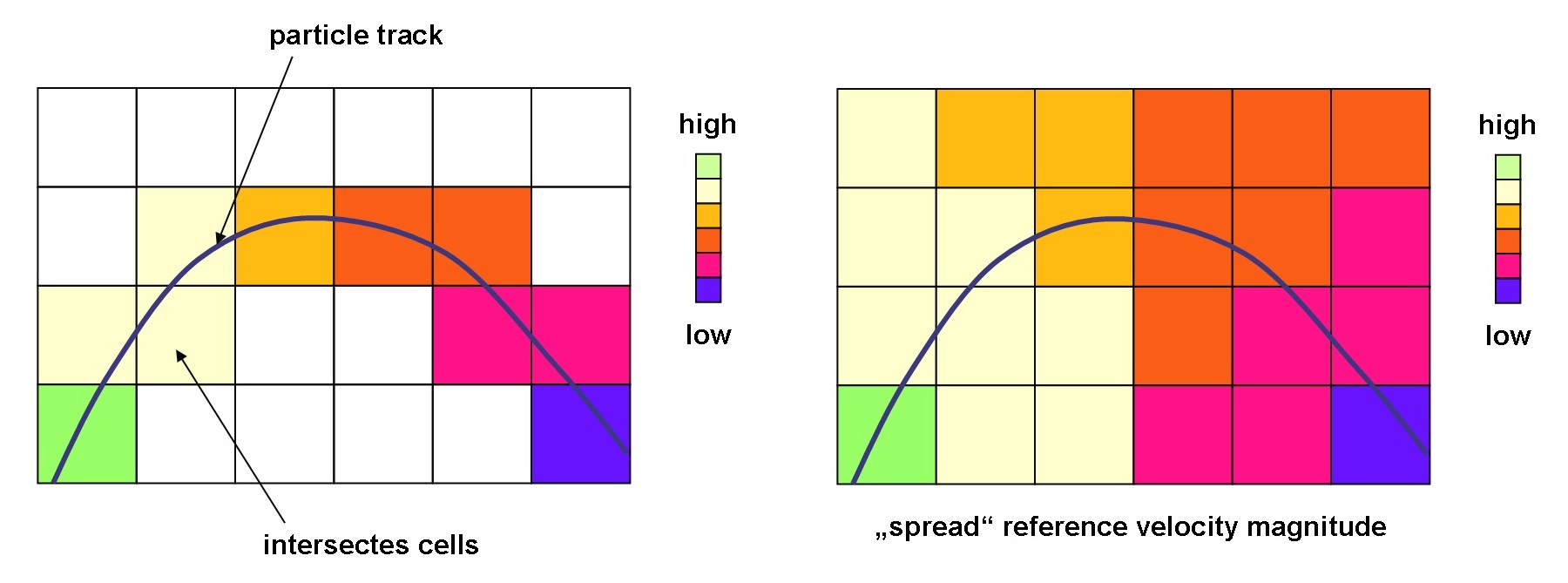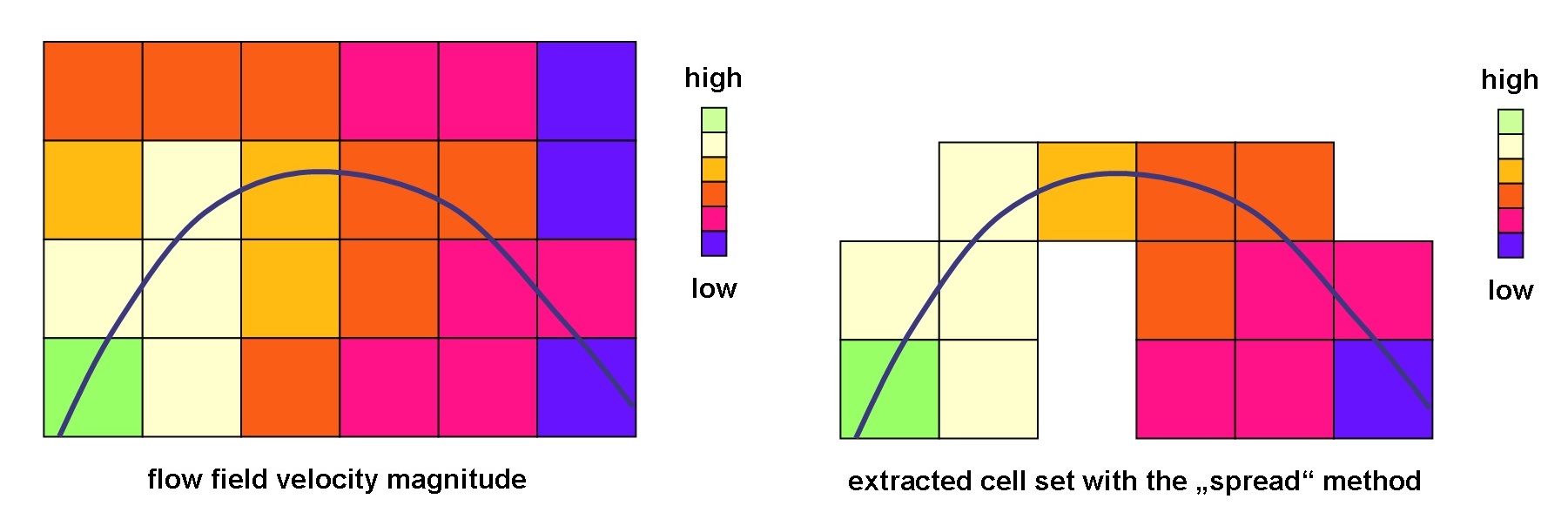Particle Track Data Extraction Method | ||
| ||
The particle track data extraction method is an approach that utilizes two types of information:
- Particle track information such as the particle runtime, speed, and length of tracks
- Velocity field in the design space
The velocity magnitude of the flow field is used to apply a cutoff value - similar to the velocity extraction method. Nevertheless, the cutoff parameter is not a given absolute velocity but a given value for a velocity magnitude fraction.
The cutoff parameter determines how small a cell velocity magnitude can be in comparison to a reference velocity magnitude for that individual cell. The reference velocity magnitude is an individual quantity for each cell and is calculated from a set of particle tracks. The velocities in cells intersected by particle tracks are distributed - "spread" - throughout the complete design space. By this procedure each cell gets its associated reference velocity.
The reference velocity in a cell is a velocity that is a "typical" velocity for this special region.
The figure below illustrates this method for a single particle track that travels through a set of cells:

The cell velocity (from the flow field) is compared to the cell reference velocity. If the fraction of the cell velocity magnitude and the reference velocity magnitude is smaller than the cutoff, the cell is not part of the result cell set. If the fraction exceeds the given cutoff, the cell is placed into the result cell set:
Vcell >= Vcell_reference * cutoff --> cell belongs to result cell set.
Example
Assume a cell with a velocity magnitude of 3 m/s. The reference velocity magnitude of that cell shall be 4 m/s.
Cutoff = 0.8: Vcell_reference * 0.8 = 3.2 m/s.
The cell velocity (3 m/s) is smaller than 3.2 m/s --> Cell does not belong to the result cell set.
Cutoff = 0.6: Vcell_reference * 0.8 = 2.4 m/s.
The cell velocity (3 m/s) is larger than 2.4 m/s --> Cell does belong to the result cell set.
The figure below depicts the flow field velocity distribution (left) with the same example in the previous figure. It can easily be seen that the flow field solution differs from the computed reference velocity field.

In the figure above (right), the resulting cell set is depicted. It contains all cells that have a flow field velocity that is larger than the reference velocity multiplied by the cutoff value.